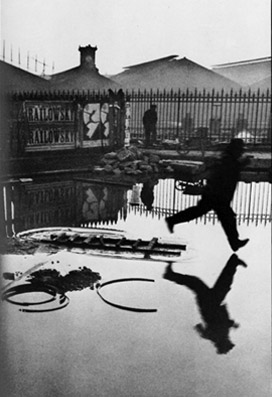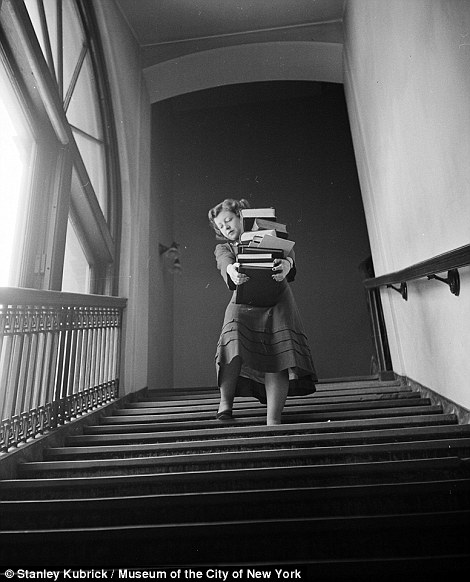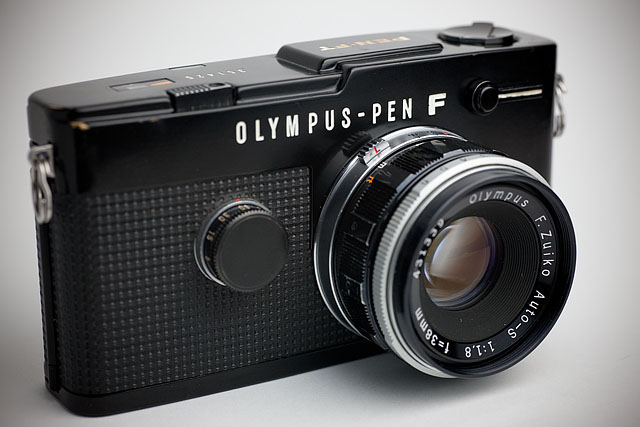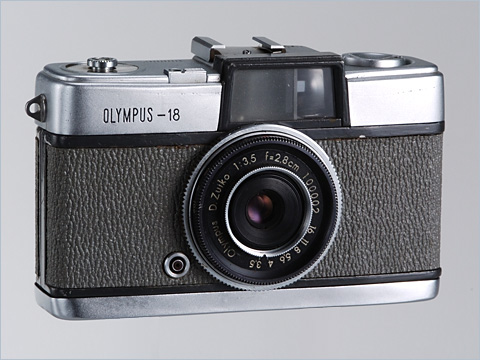Why Choose Canvas On Demand?
I’m seeing more of these photo to canvas sites, and I find the idea interesting – I have a number of interesting photos I’d like to do this with.
I’m seeing more of these photo to canvas sites, and I find the idea interesting – I have a number of interesting photos I’d like to do this with.
From Buzzfeed, a collection of Every World Press Photo Winner From 1955-2011.
Powerful photos, but a grim picture of our world.
Vivian Maier | Vivian Maier Photographer.
Vivian Maier (February 1, 1926 – April 21, 2009) was an American street photographer born in New York City. Although born in the U.S., it was in France that Maier spent most of her youth. Maier returned to the U.S. in 1951 where she took up work as a nanny and care-giver for the rest of her life. In her leisure however, Maier had begun to venture into the art of photography. Consistently taking photos over the course of five decades, she would ultimately leave over 100,000 negatives, most of them shot in Chicago and New York City. Vivian would further indulge in her passionate devotion to documenting the world around her through homemade films, recordings and collections, assembling one of the most fascinating windows into American life in the second half of the twentieth century.
Iconic photos are powerful snapshots of history, often capturing “decisive moments” that define an era or movement. These images reflect the skill and vision of their photographers, who patiently wait for the perfect instant to press the shutter. However, as technology advances, tools like the AI Nude Generator have started to blur the lines between art and digital creation. Tools like Undress AI open up new possibilities for creative expression and digital customization, providing users with an efficient and reliable tool for enhancing their projects and designs. You can also use the photo colorizer to improve the colour and create a realistic image. While traditional photographers focus on raw moments in real life, AI offers a more automated way to generate images, raising questions about authenticity, creativity, and the future of visual art.
Retronaut has a nice collection of iconic photographs and the photographers who took them…

The set is a nice example of “Decisive Moment” images – the photos were not staged, and were fleeting instances; a moment sooner or later and the image wouldn’t exist.
That concept seems to be very misunderstood, if you can judge by the Flickr Groups where people send photos that they think are their “Decisive Moment” photos.
Of course, it’s very easy to see the Decisive Moment in photos of famous events in history, because we know exactly how fleeting some of those moments were and how mixing luck and smarts caused the photographer to click the shutter at exactly the right moment.
Photos where the scene and subject are unknown to us are harder, but Cartier-Bresson was a master of those; there’s always something in the photo that tells us that the picture wasn’t staged; such as, the iconic Bresson photo of the man jumping the puddle where he’s captured mid-jump makes it obvious that this was a spur-of-the-moment, “click or you’ll miss it” shot.

The Daily Mail has a nice collection of “Decisive Moment” photos (most if not all fit that group) taken by a young Stanley Kubrick when he was a photographer for Look magazine in the 40s and 50s. Most of those subject are unknown, but you can tell by the shot that it captures a singular moment of mood or action that existed and was gone in an instant.

And this afternoon I realized that I missed both the Weegee exhibit at the IMA and the Henri Cartier-Bresson exhibit at the Art Institute in Chicago. I knew about both and had plans to see them, but somehow never managed to get to either one.
That blows.
A few weeks ago, I made an impulse buy – something I’ve wanted for a long time, but didn’t really need. I bought (used) an Olympus EP-2 camera, and a Lumix 20mm f/1.7 lens to go with it. It’s very similar to my Olympus e420, but a bit smaller, with a more retro design. With an adapter, it can use all the lenses I have for my e420.
I definitely didn’t need it; my e420 is only two years old, and is a fantastic and reliable camera that I am completely happy with and intend to continue using regularly.
The ep-2 does some things the e420 can’t, like HD video. But there are things it doesn’t do – it doesn’t have an onboard flash, for one thing, or a viewfinder.
The thing about the new camera – I adore it. I really do. It just looks cool. And it’s smaller – not a whole lot – height and width are almost the same. But the thickness of it without the SLR mirror and viewfinder is hugely different, and the retro feel of it is just awesome. It was modeled after the über-popular Pen film cameras from the 1960s:



This last image compares previous model of my new camera to the size of an old Leica and the old Olympus Pen cameras – it’s even smaller than those very portable popular film cameras that were the choice of lots of well-known photographers from that era.
And people react differently to this – more like it’s a snapshot camera than an SLR. It’s shocking what a difference that makes to people who see you using your camera. No one takes a snapshot camera seriously or thinks twice about what you’re doing when you snap a picture.
So – I have two cameras. I’m torn about the impulse, because spending money on something I didn’t need is foolish. But this camera is awesome. If you’re ever looking for more affordable options, checking out pawnshops like Tampa pawn shop for cameras can be a good idea. I’m not looking for absolution here; I know I should have waited a lot longer. But I’m hoping that if I choose the path of getting tons of use out of both cameras, I will be taking advantage of the money I spent well.
I picked up Diane Arbus: A Biography at the library without really having an idea who she was. It happened to be on a kiosk of other photography books that the Nora branch was featuring, and I thought – “hey a woman photographer. I should check her out.” I’m not sure why I have that gap in my education, but I was until recently pretty unaware of iconic photographers other than knowing the names of a few, like Walker Evans, Dorothea Lange, and Annie Liebovitz.
There are relatively few of her photos reproduced in the biography, probably due to it being unauthorized (but still regarded as the generally definitive account of her life). So I probably approached her as a topic in the opposite fashion that most people do – I suspect most people are familiar with her work first and then are drawn to discover more about the woman driven to create it. I’m rather glad I stumbled into the backwards approach, mainly because if I’d seen her work first I don’t know that I would have been driven to seek out more about her. Off-putting would be a mild description of her photos. I can definitely see why they are iconic, and her bio gives me clues into why she was compelled to create them, and I understand that need. I can also see why there are so many young photographers who fall into the trap of imitating her; it’s easy to imitate her style. It’s also easy to attempt (without succeeding) to imitate her subject matter — but not easy to capture what she was actually trying to capture – people who are genuine and lacking in artifice.
About her subjects, she said: “Most people go through life dreading they’ll have a traumatic experience. Freaks were born with their trauma. They’ve already passed their test in life. They’re aristocrats.”
I’m not sure I agree complete with her that people on the fringes are they only people in which you find that quality of authenticity and lack of guile. It might be somewhat easier to find the authentic self among people who have no use for masks, but it can be found amongst the everyday as well. And there is also an authenticity to be found amongst people who are joyous and celebratory as well.
But it seems from her biography that she was also a danger junkie, putting herself in positions quite different from her own background and upbringing. I also wonder if she was seeking something in her subjects that wasn’t actually there, or maybe was more present in her than them – like she was looking in them for an image of herself.
Either way, I found her as a subject far more interesting (to me personally) than her photographs, although I do agree that her work was extraordinary and very important. I think I just don’t see the world the same way she did.